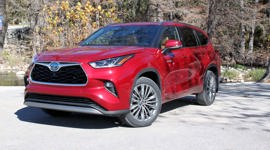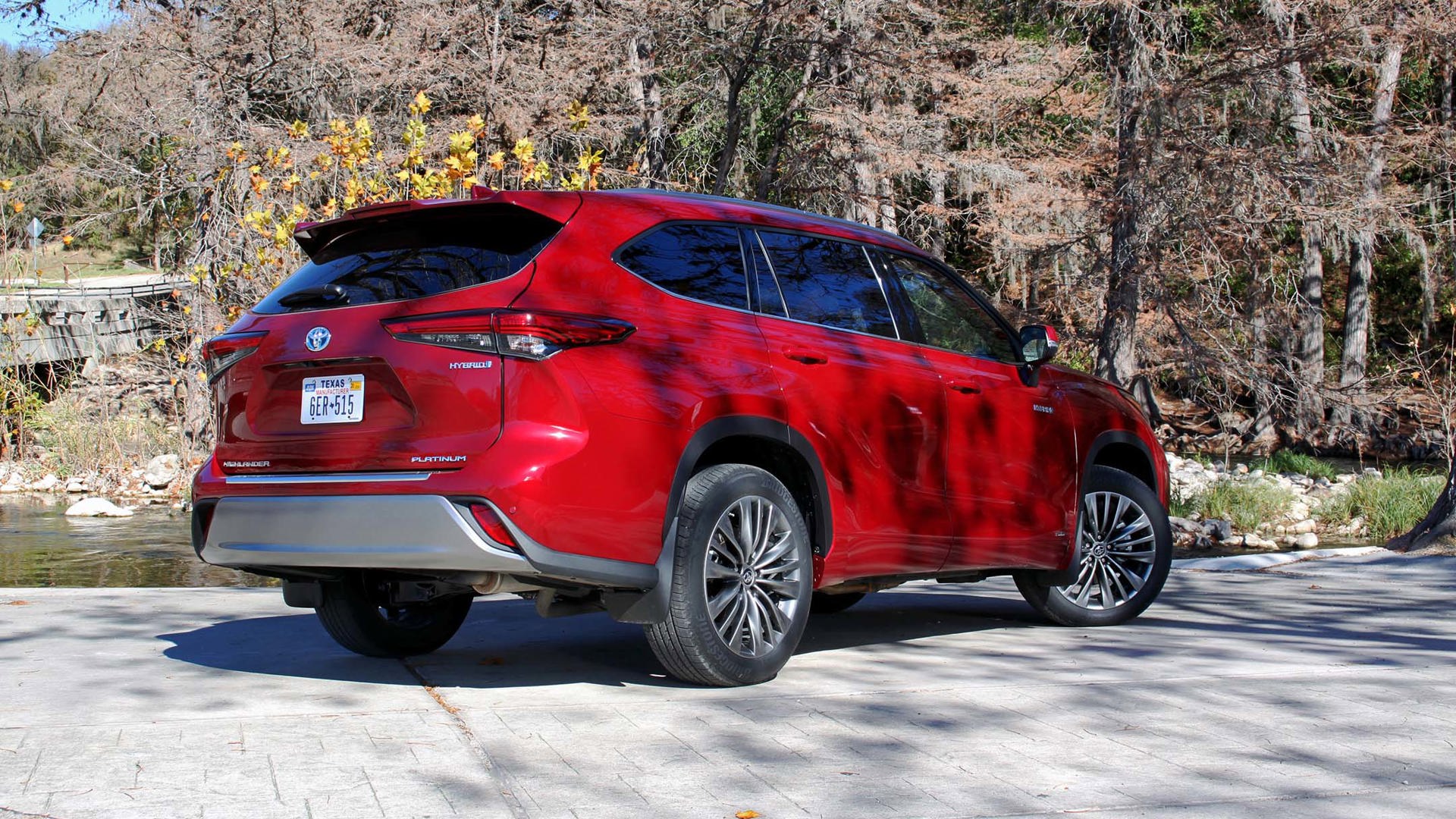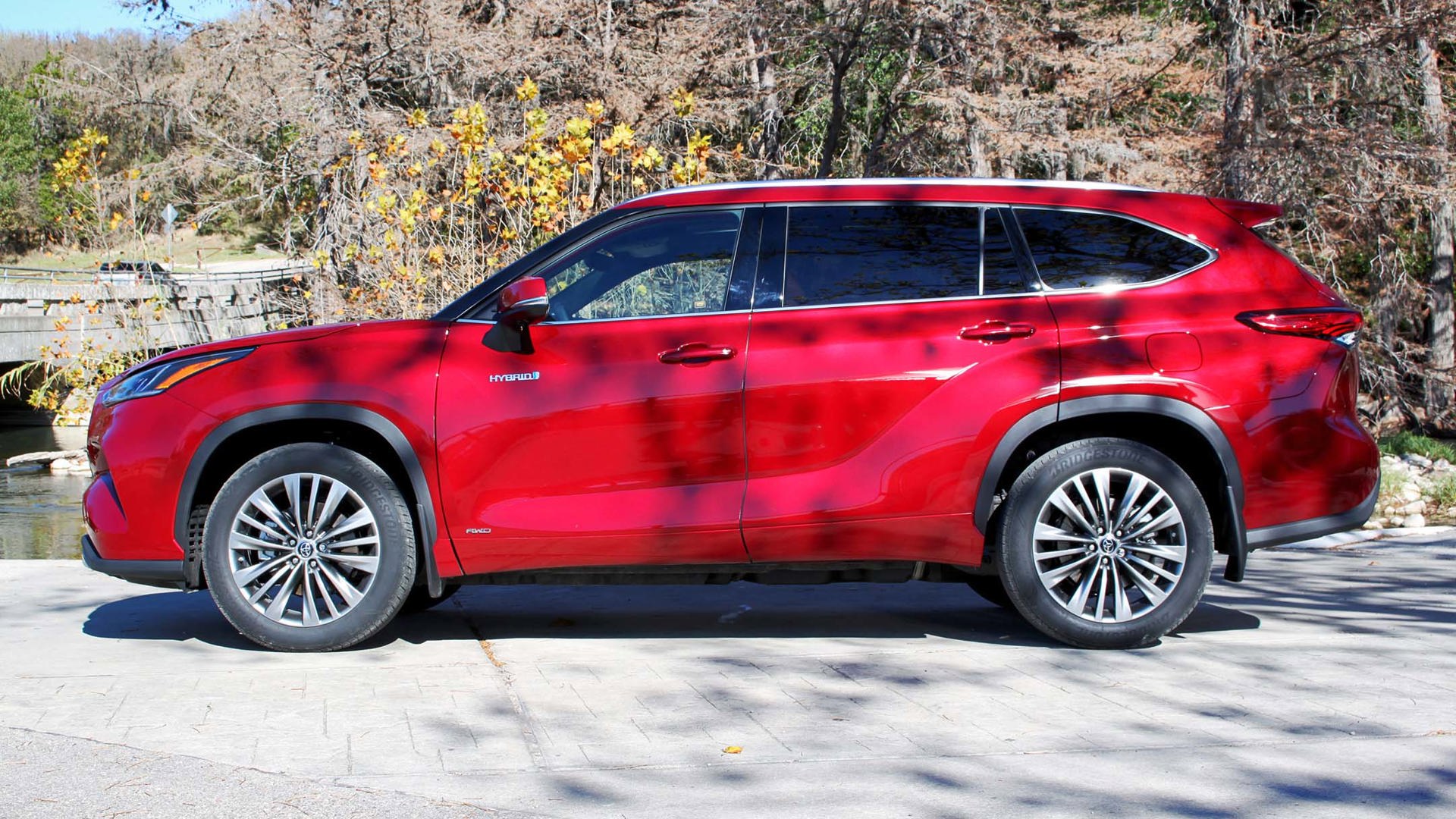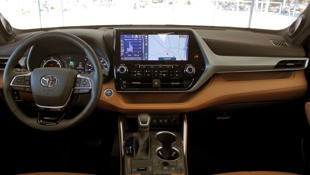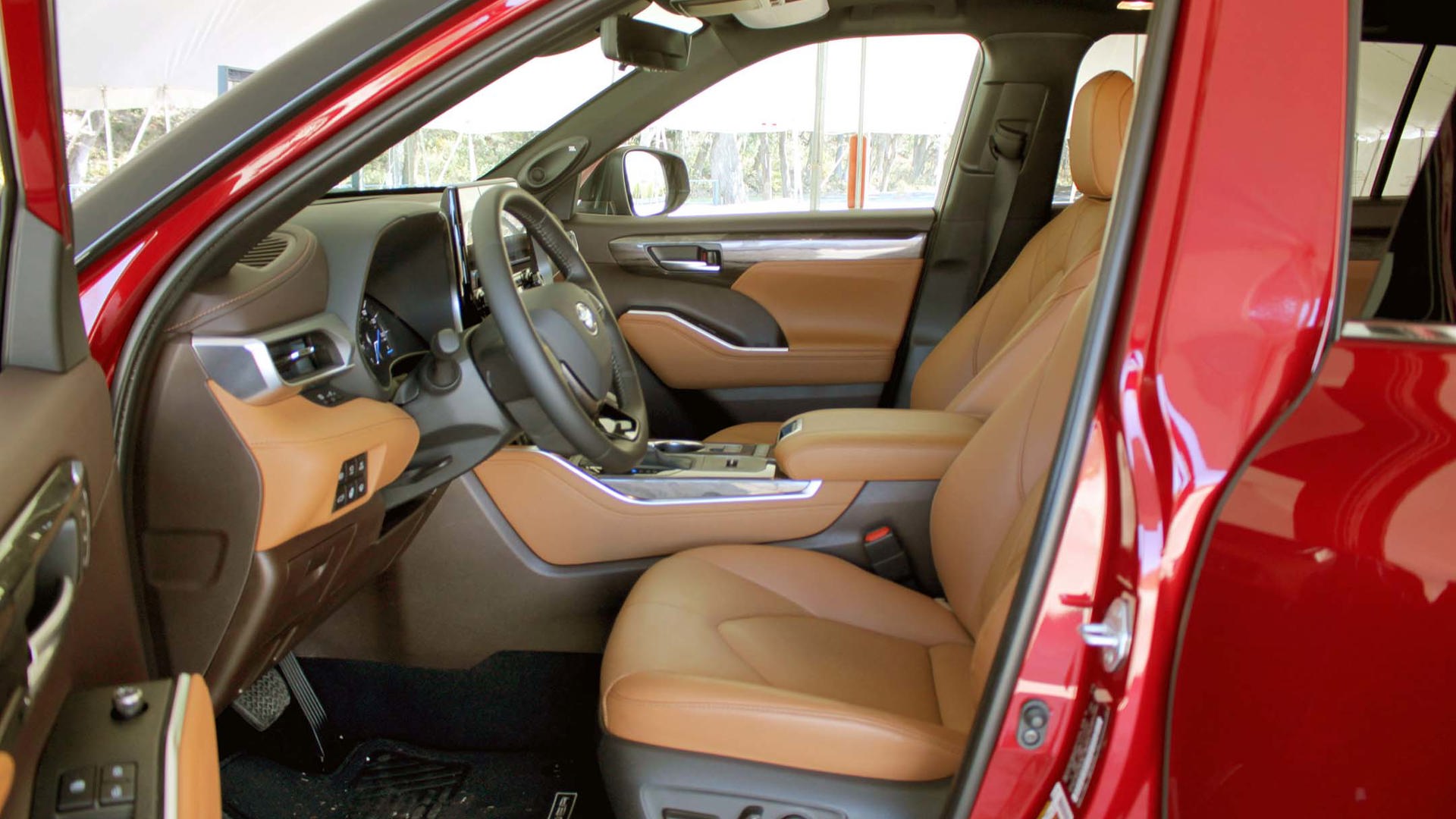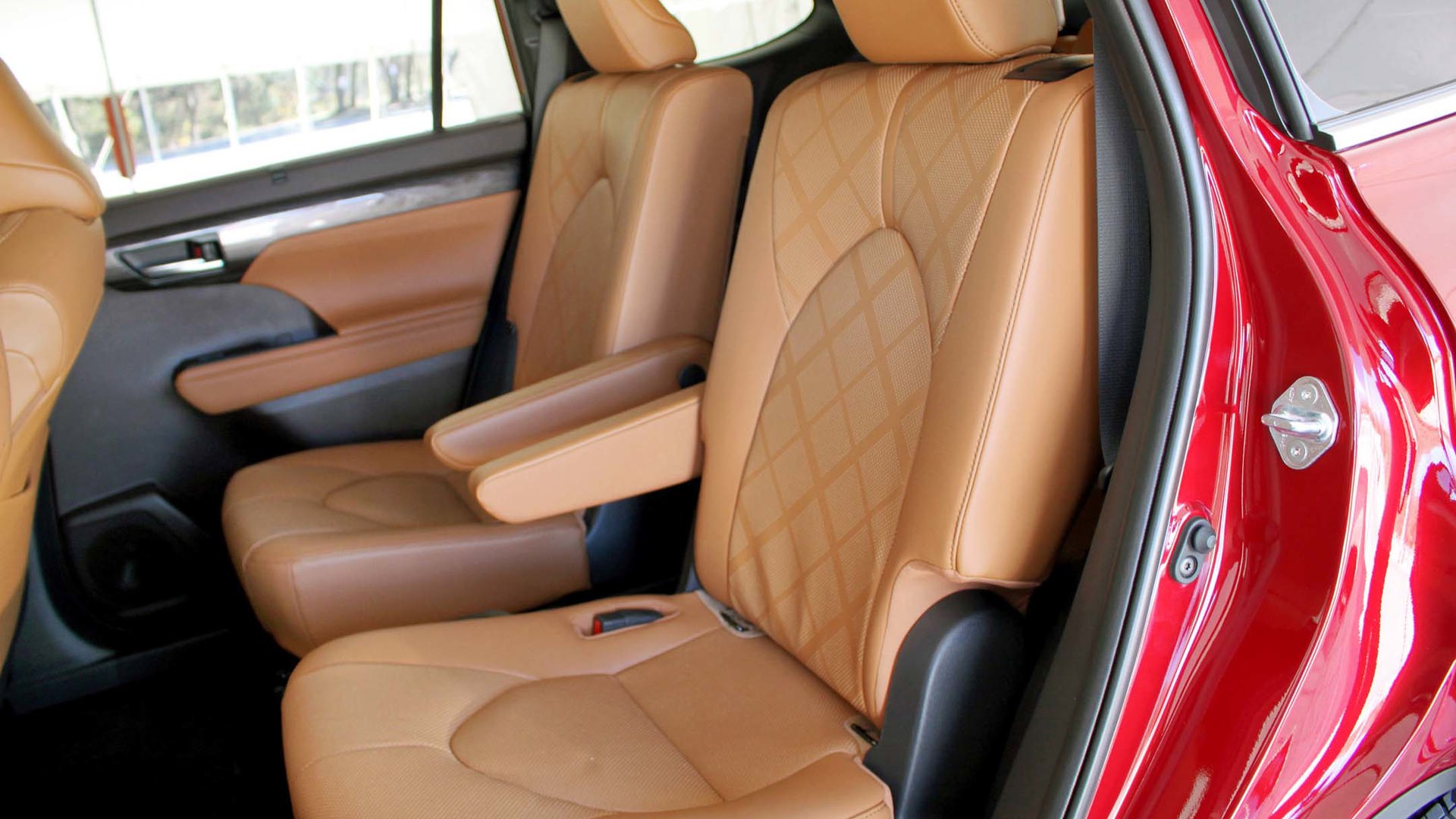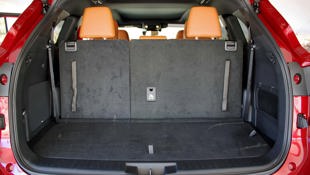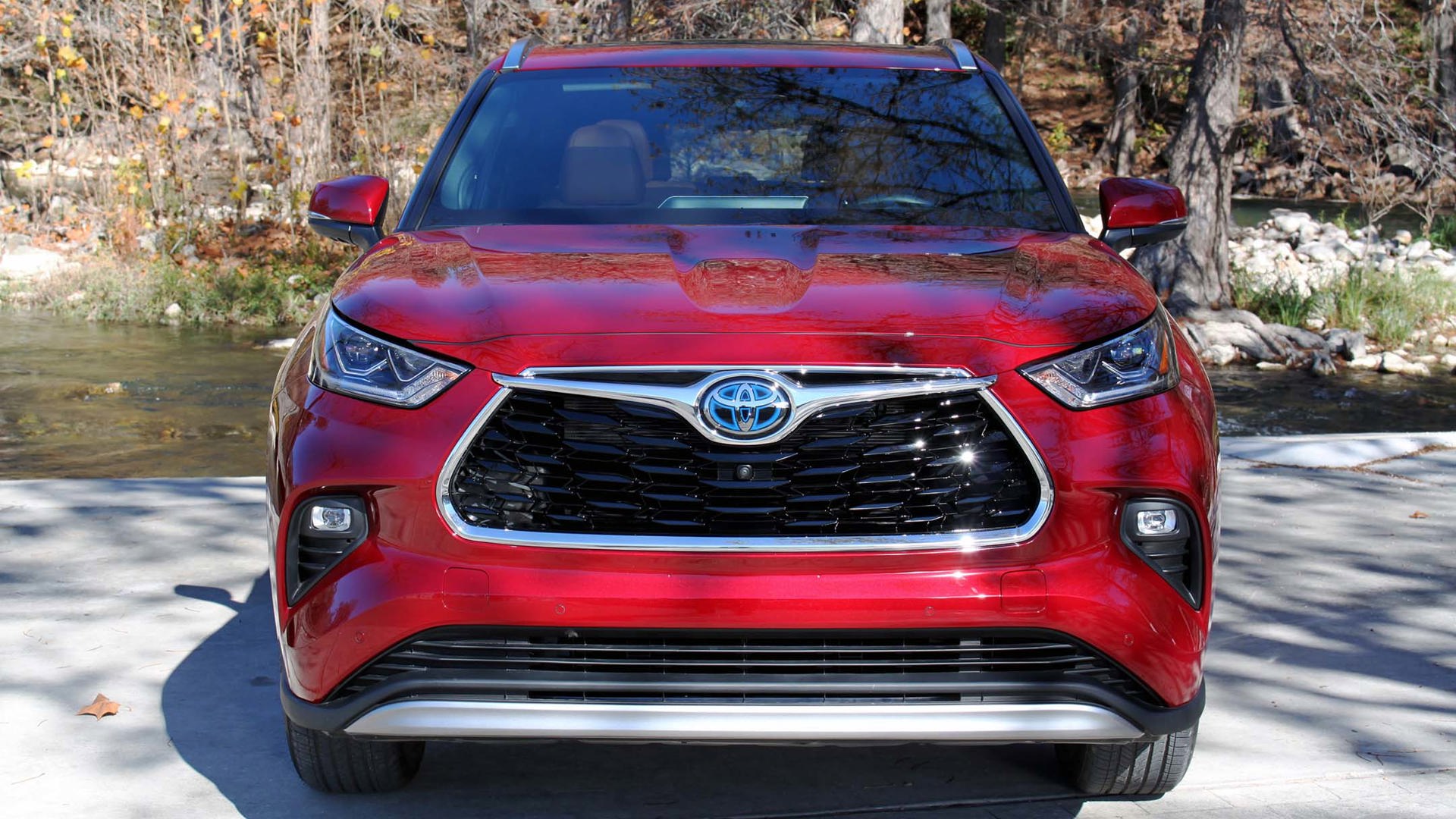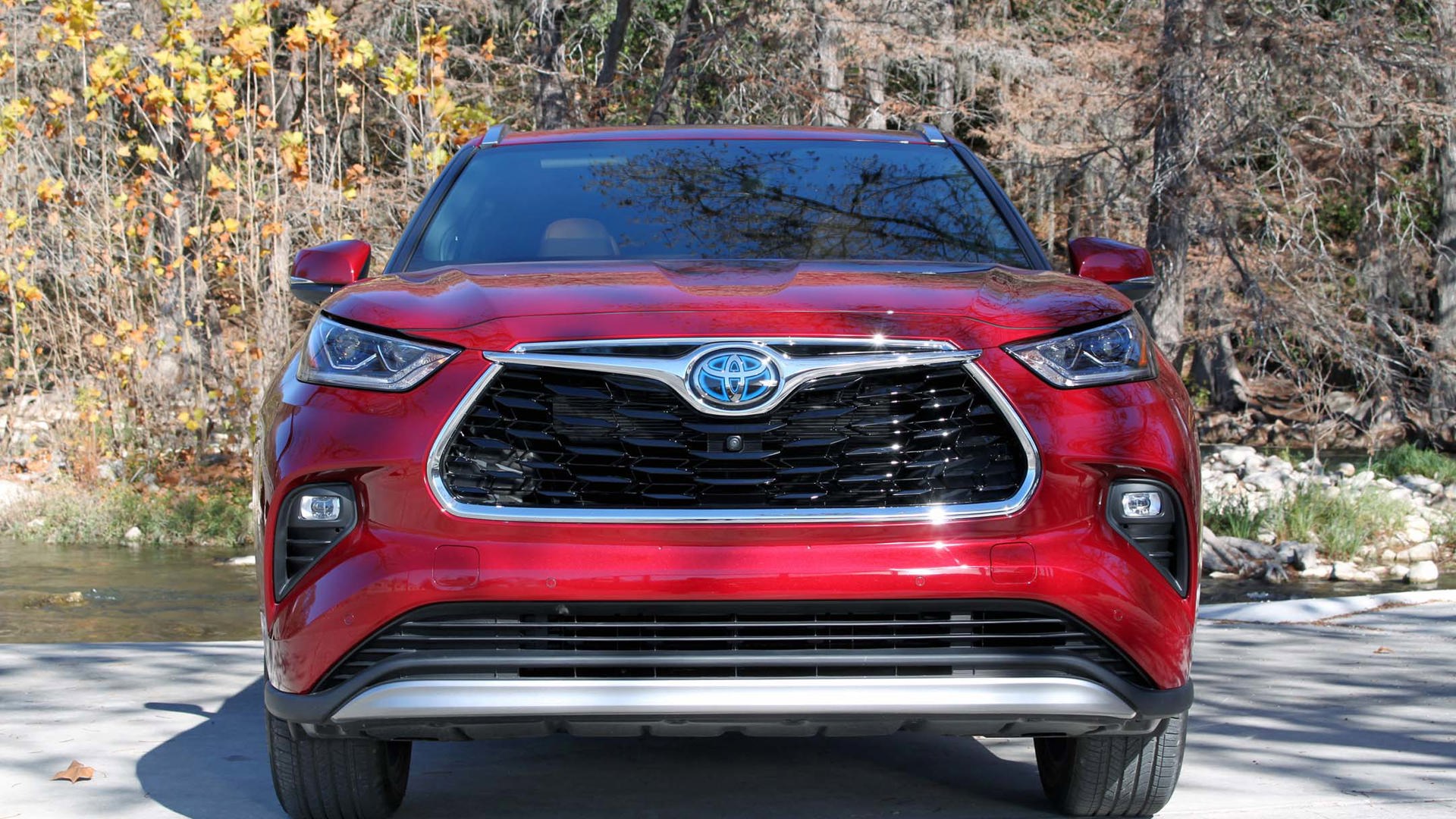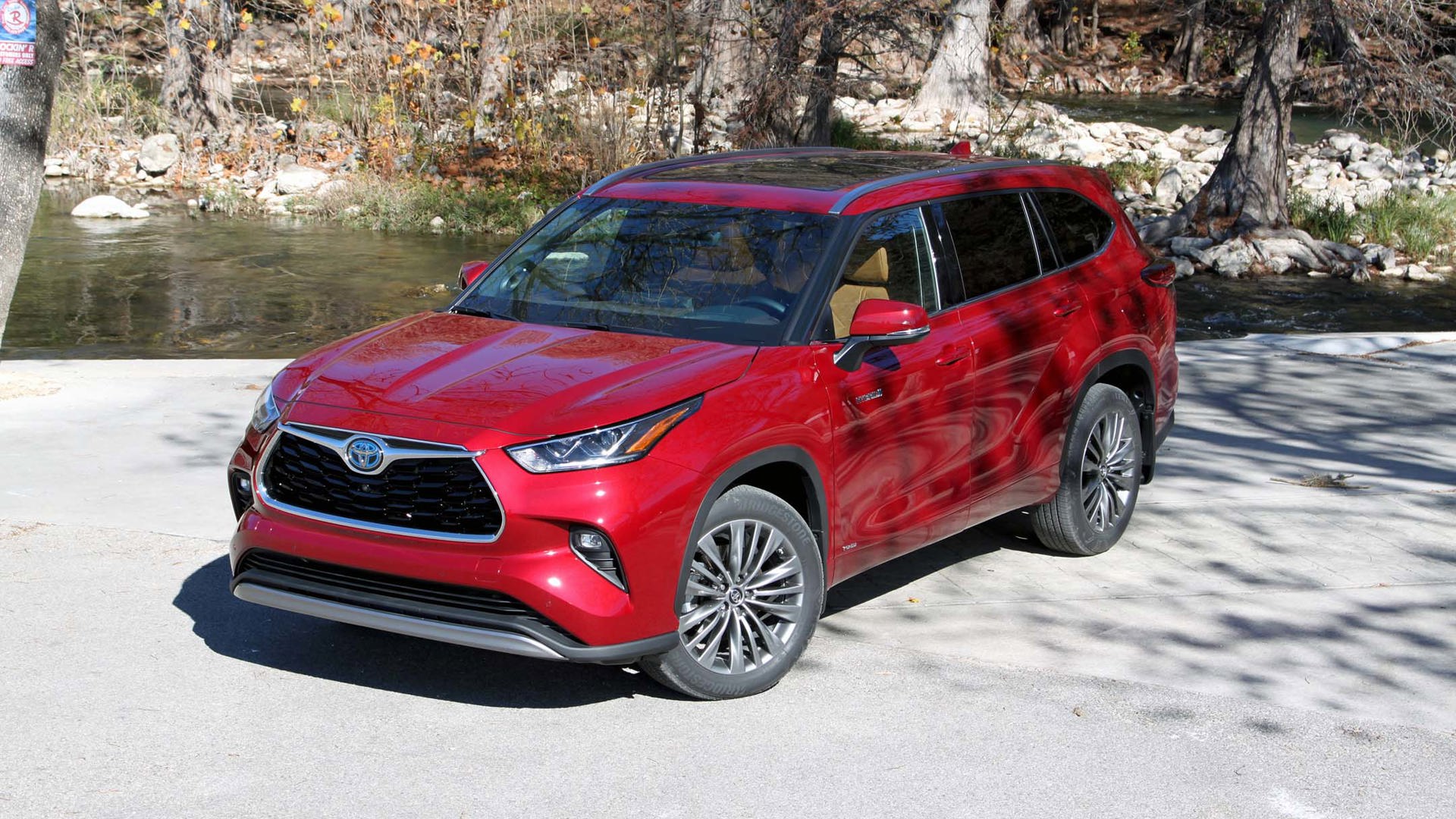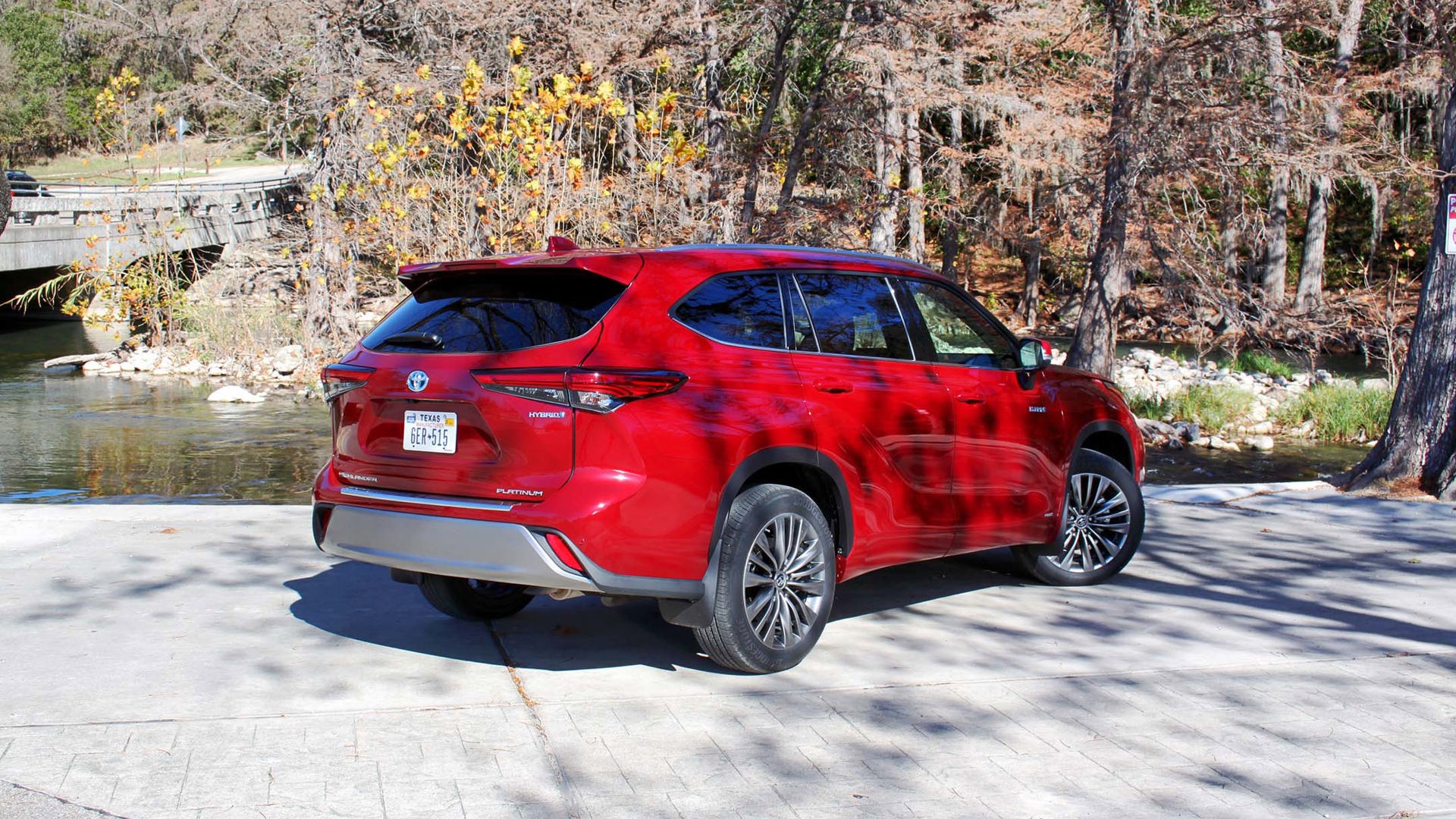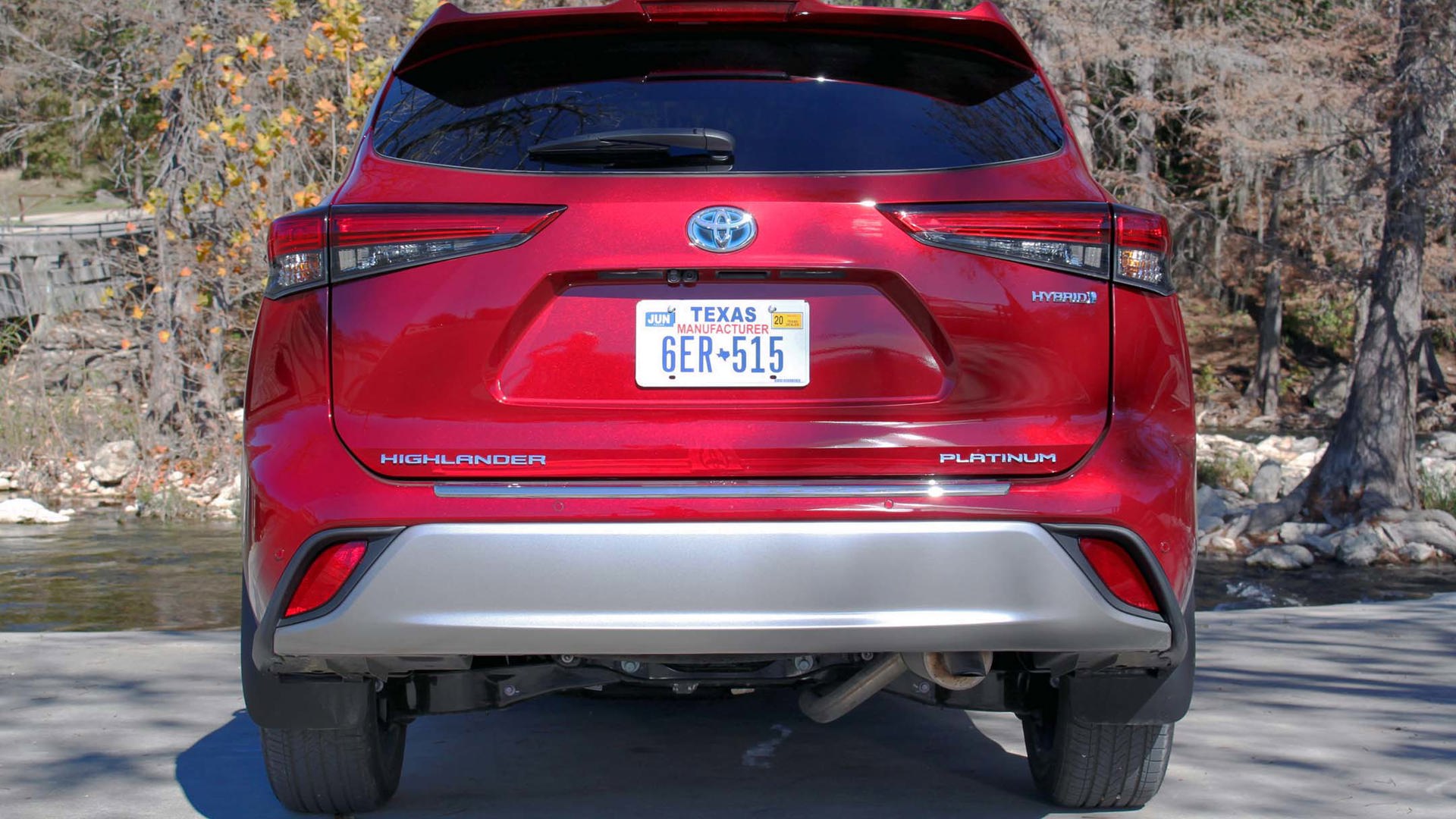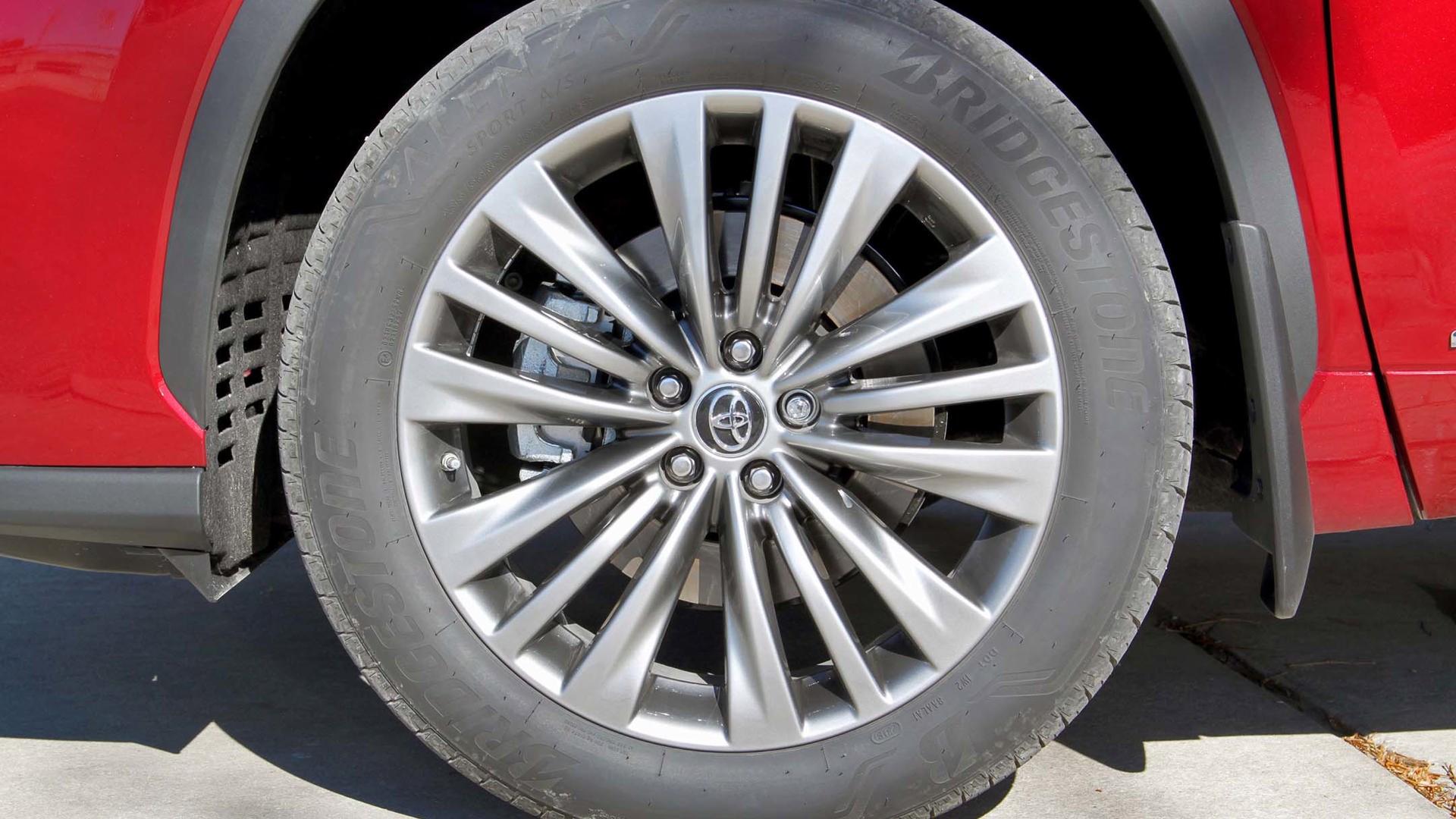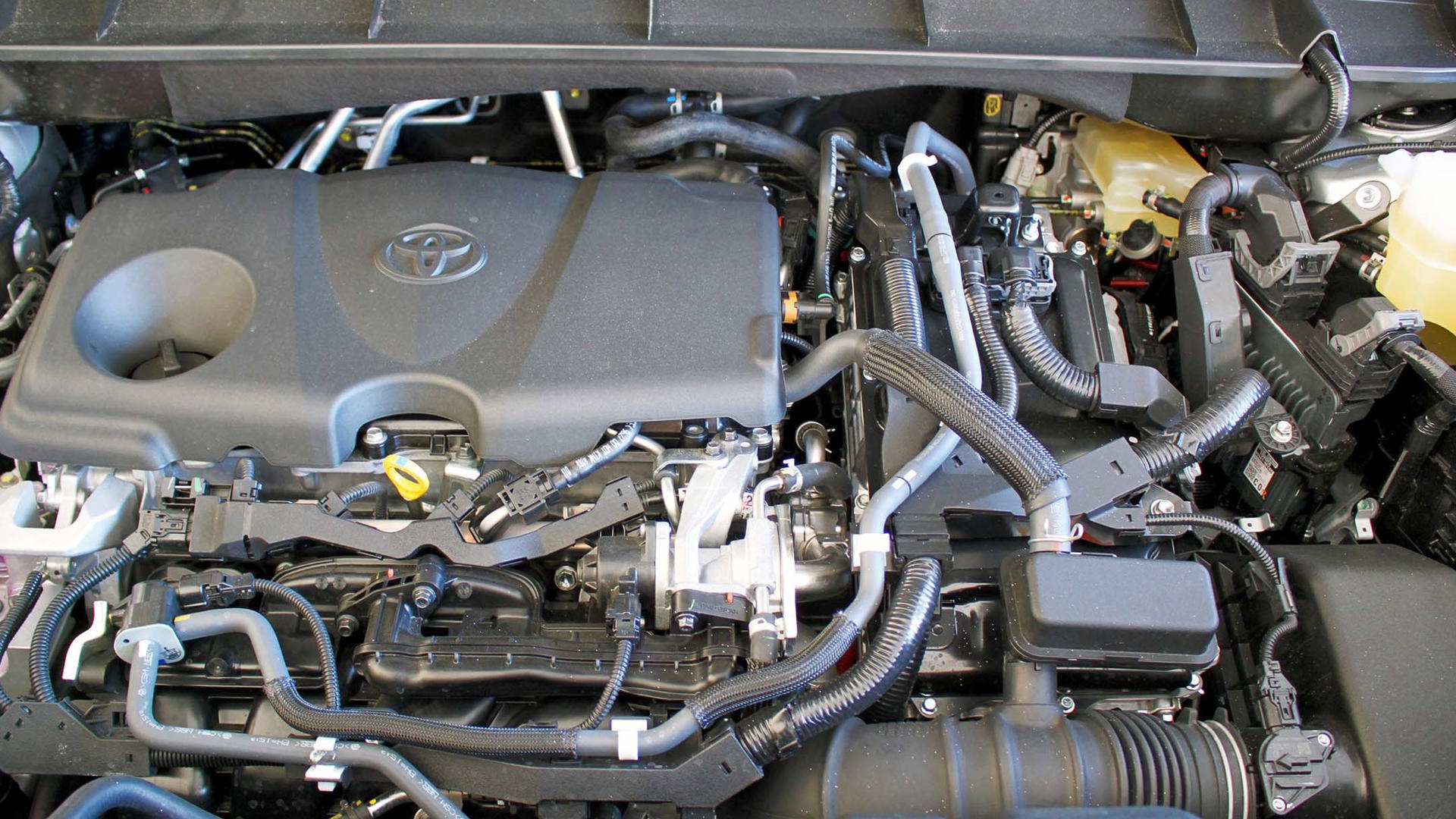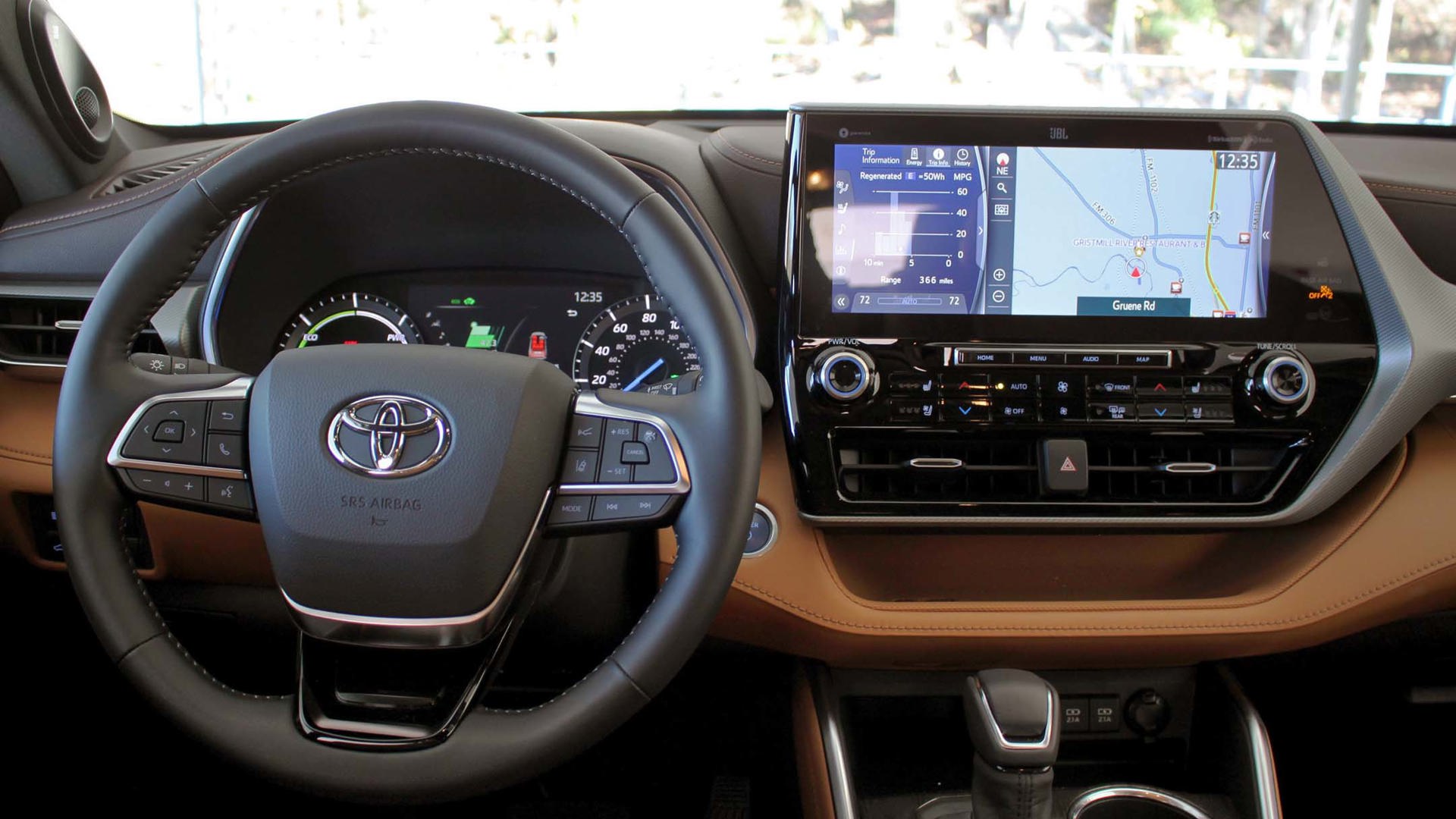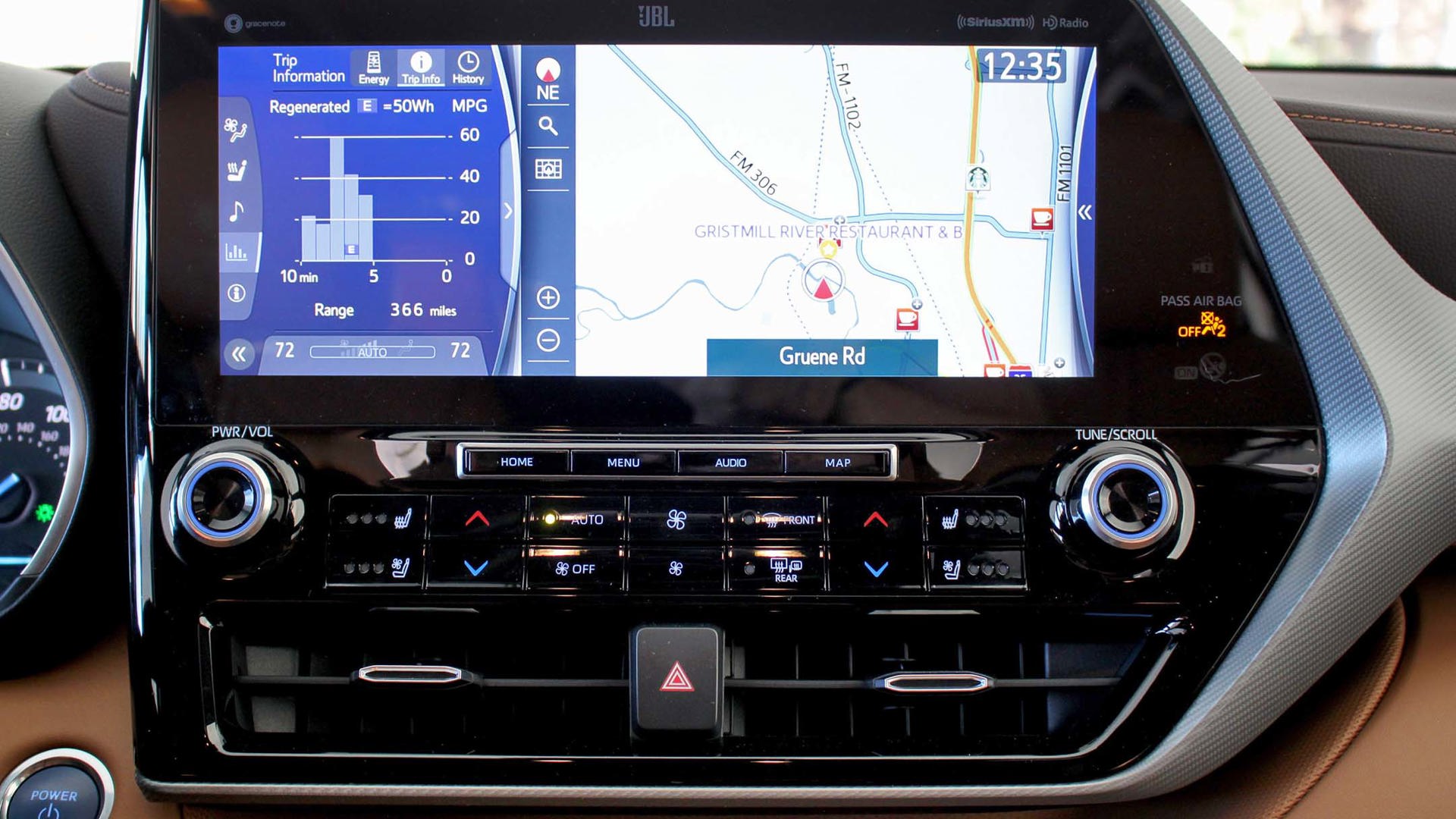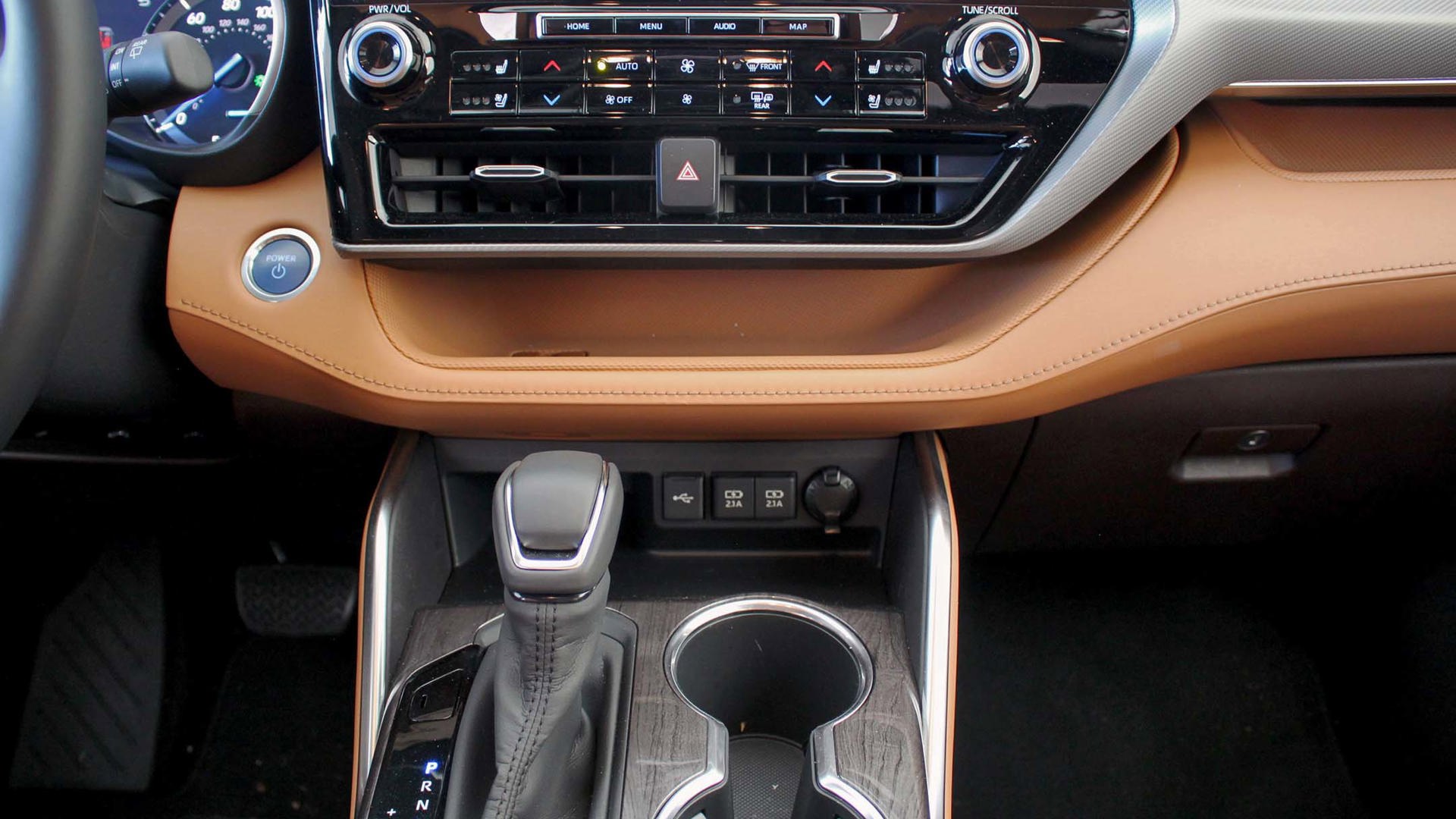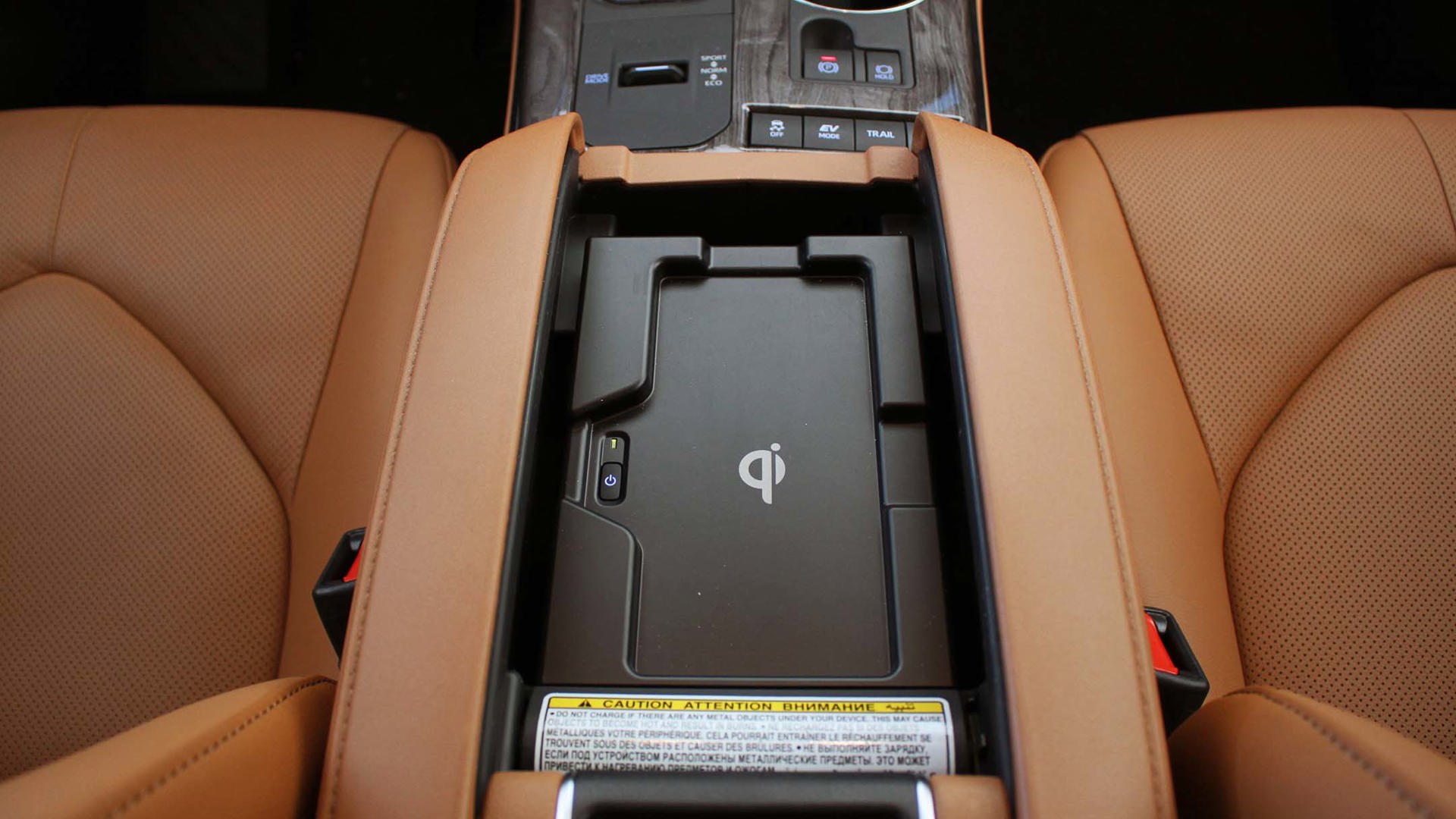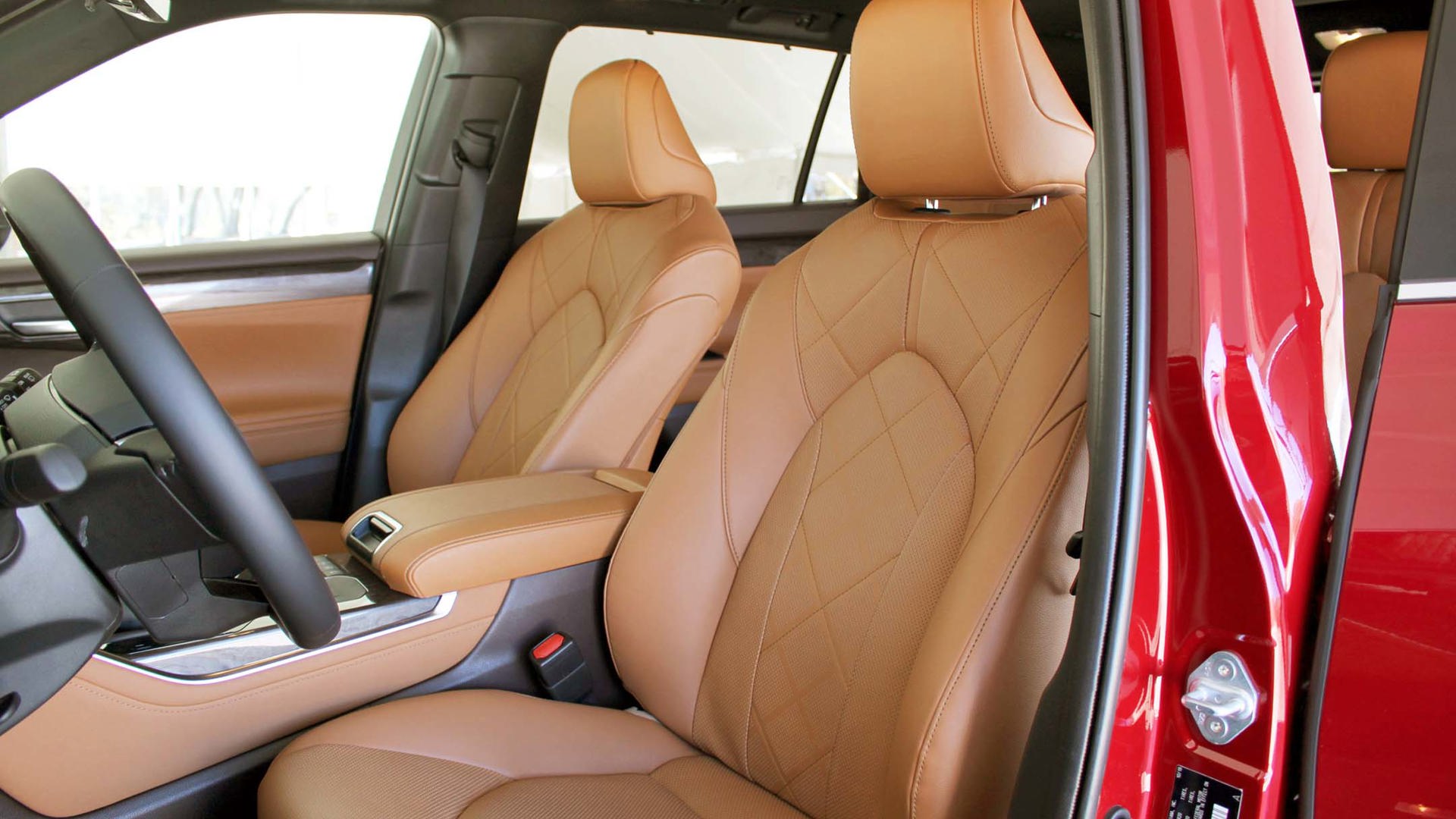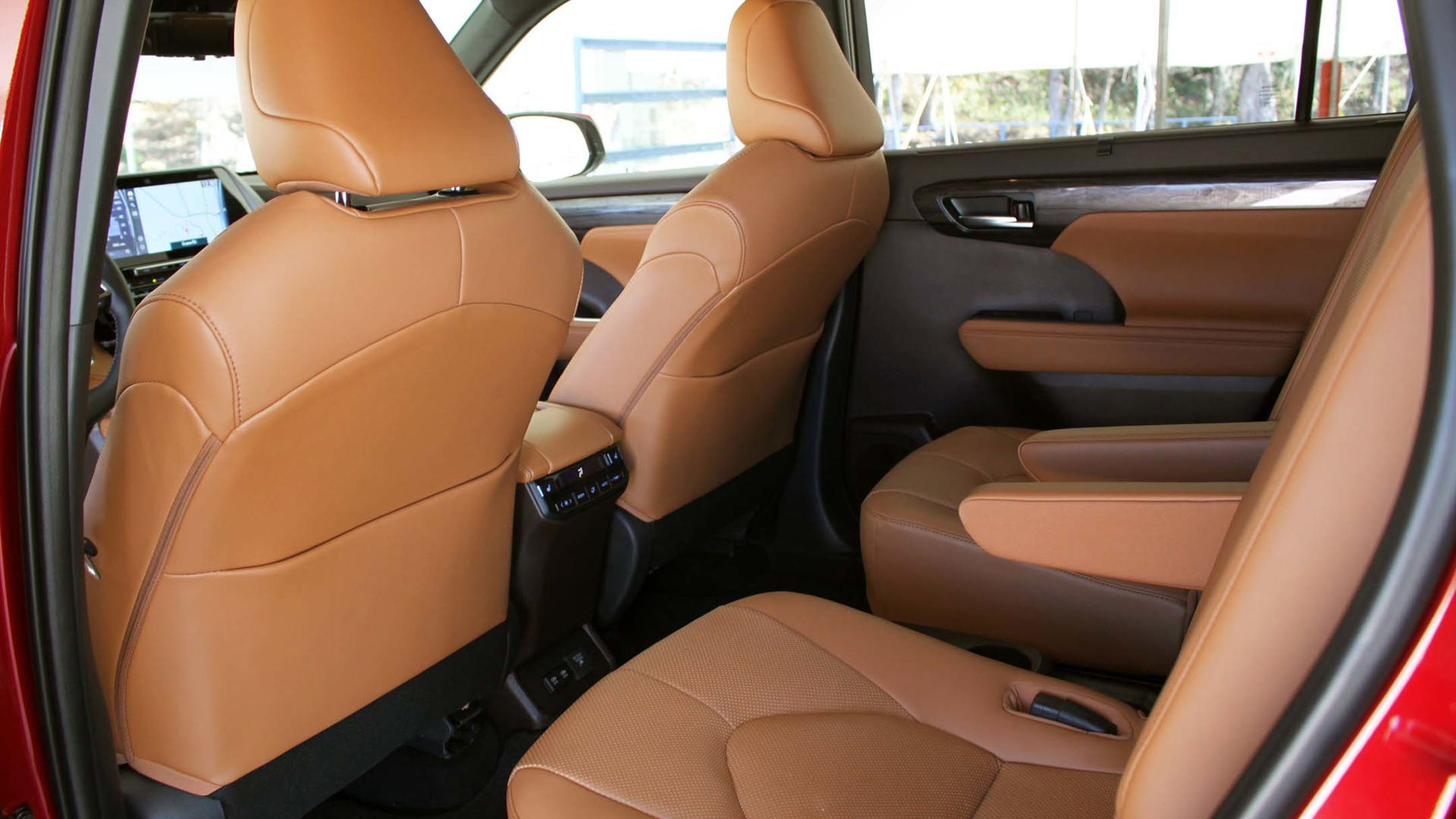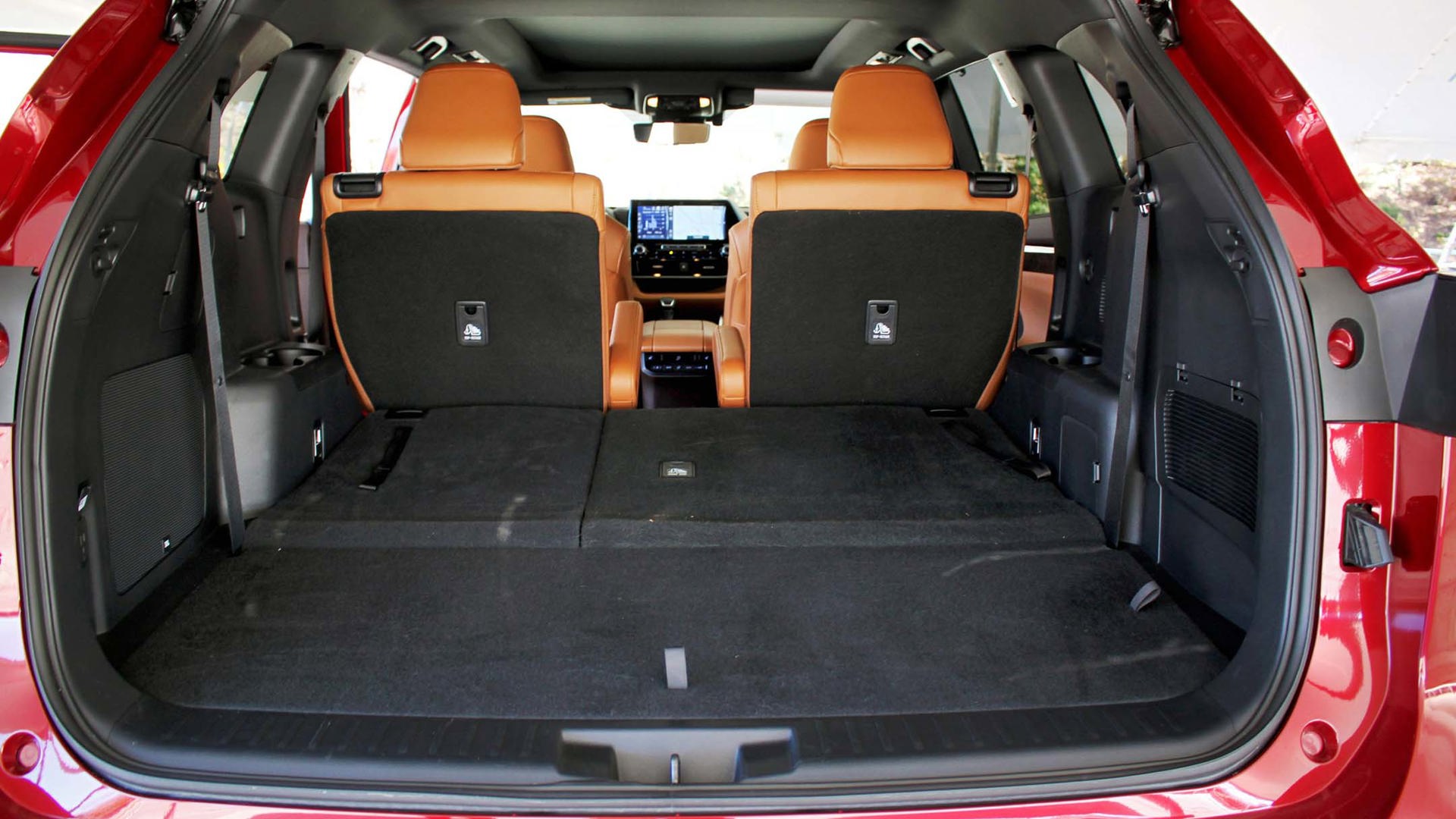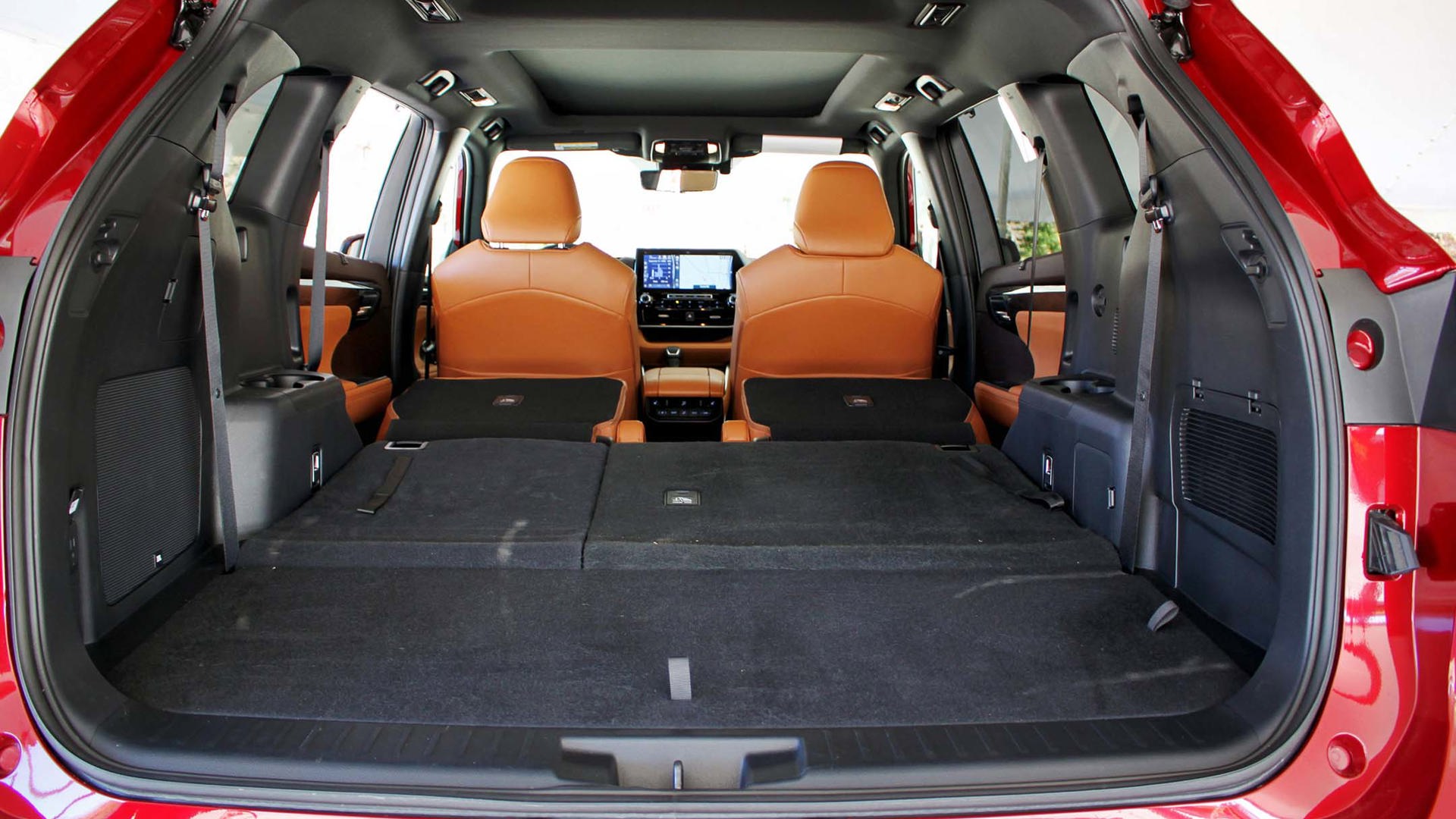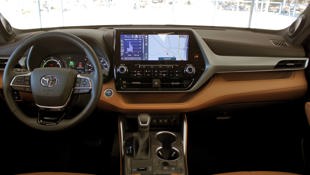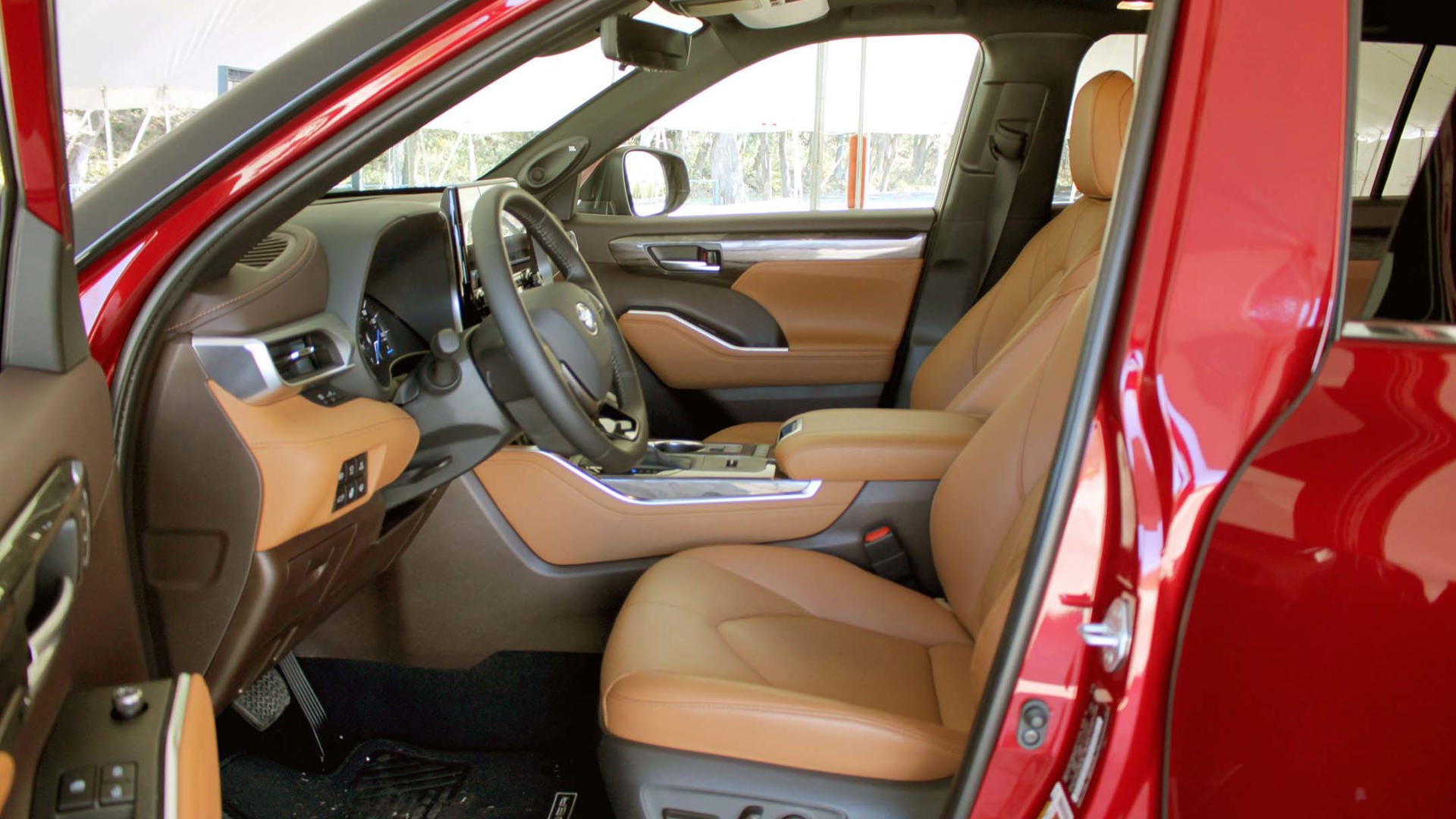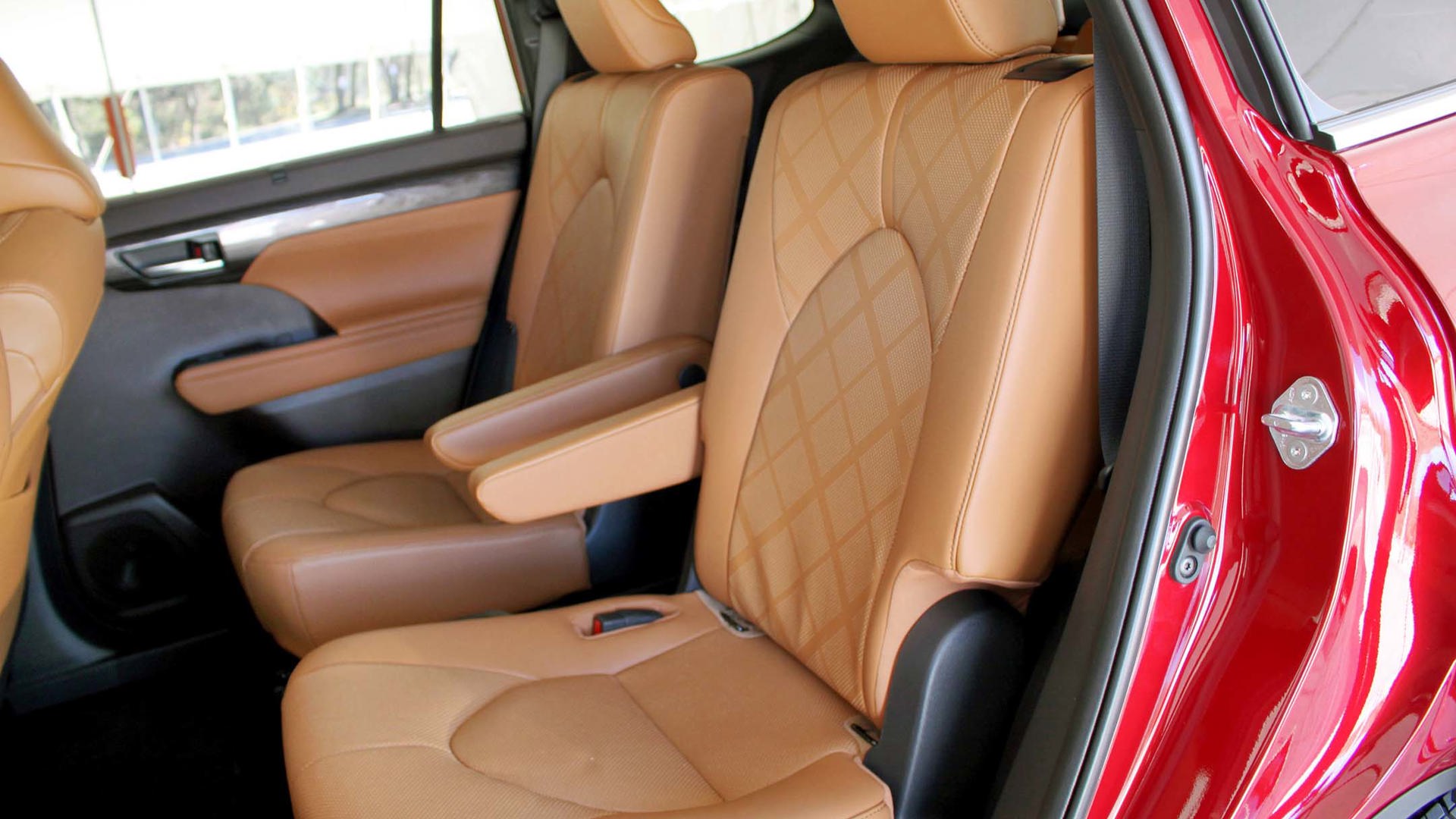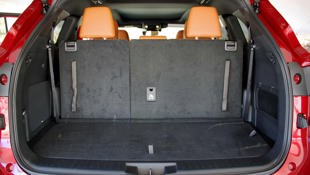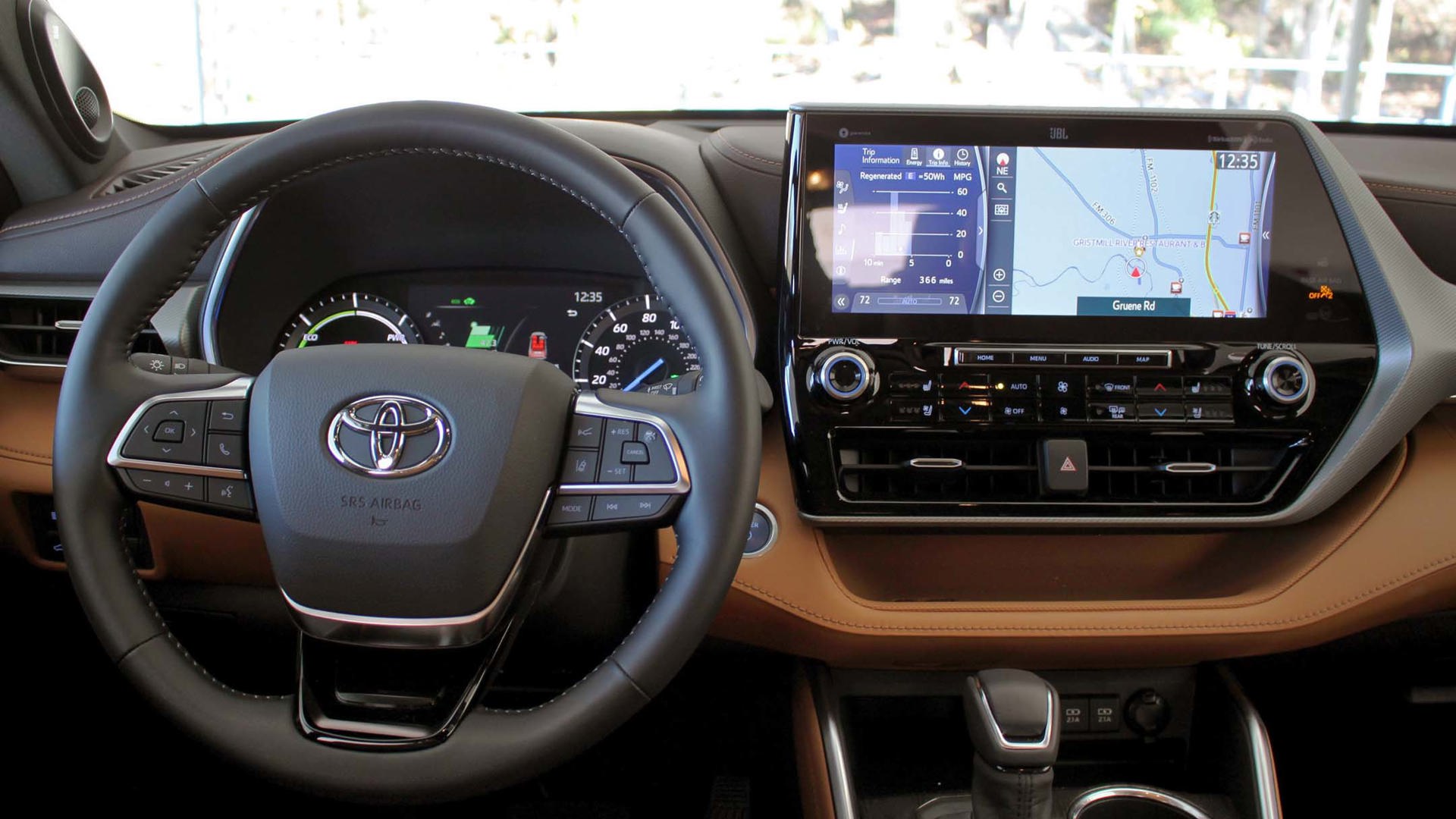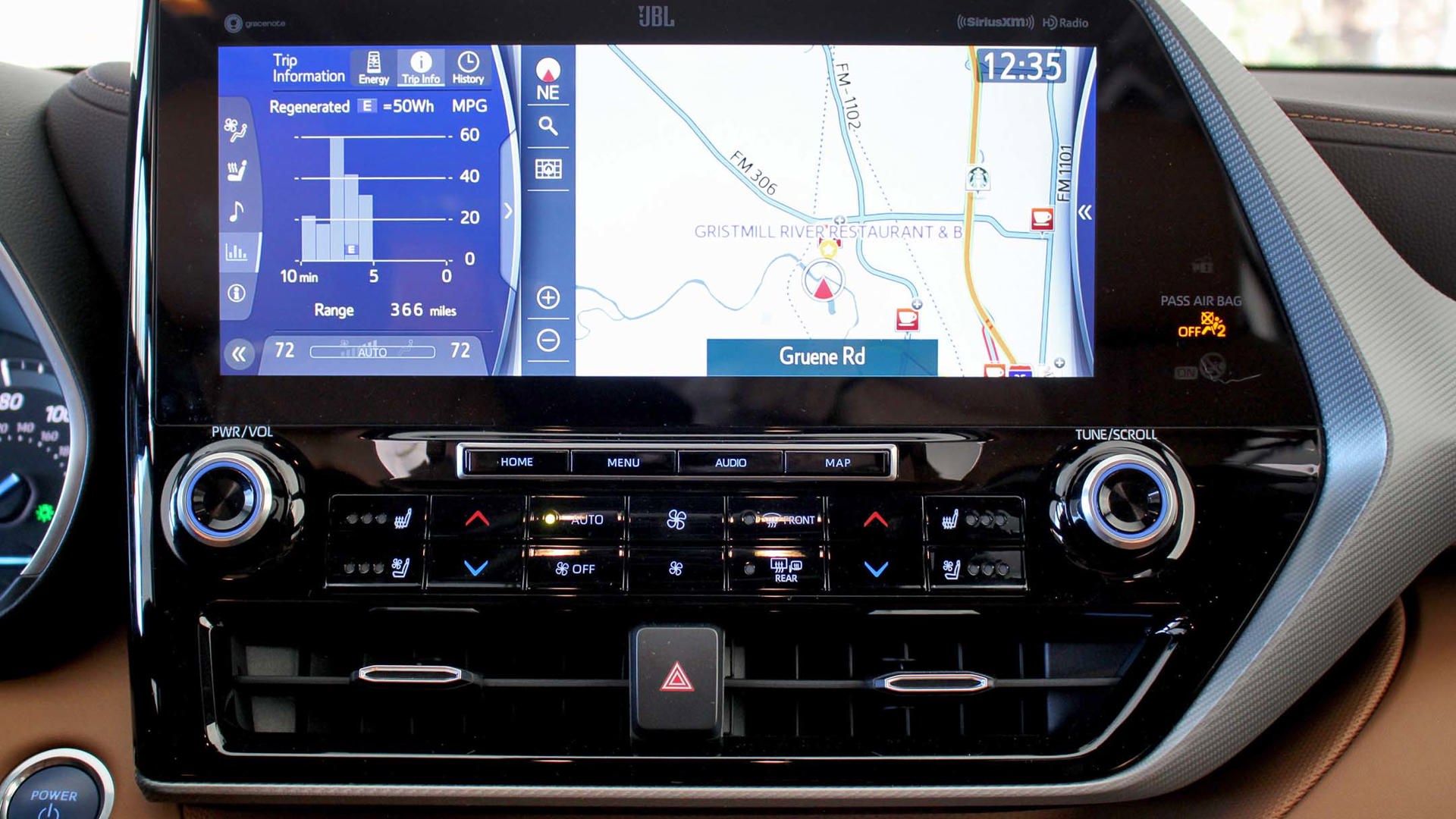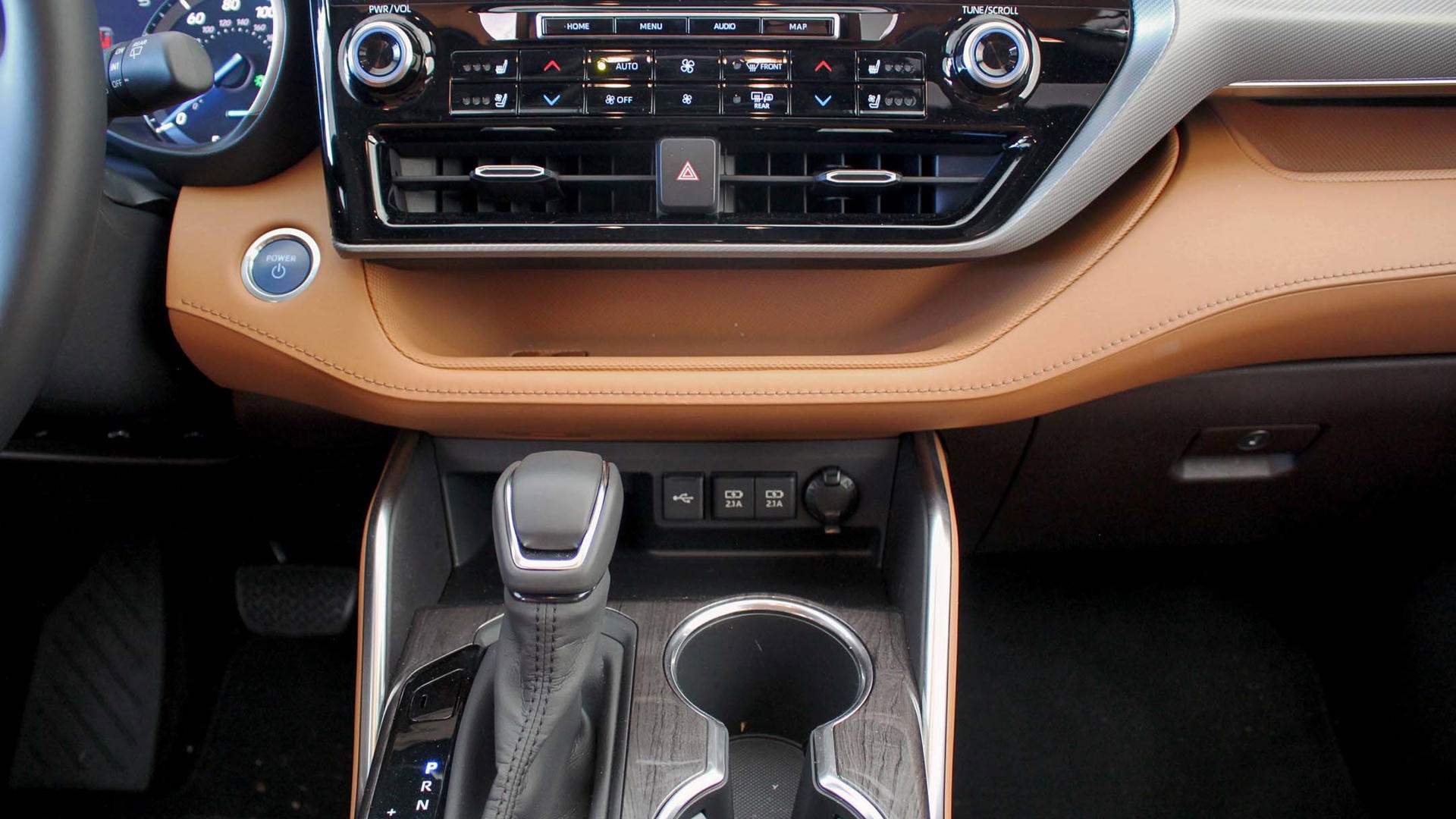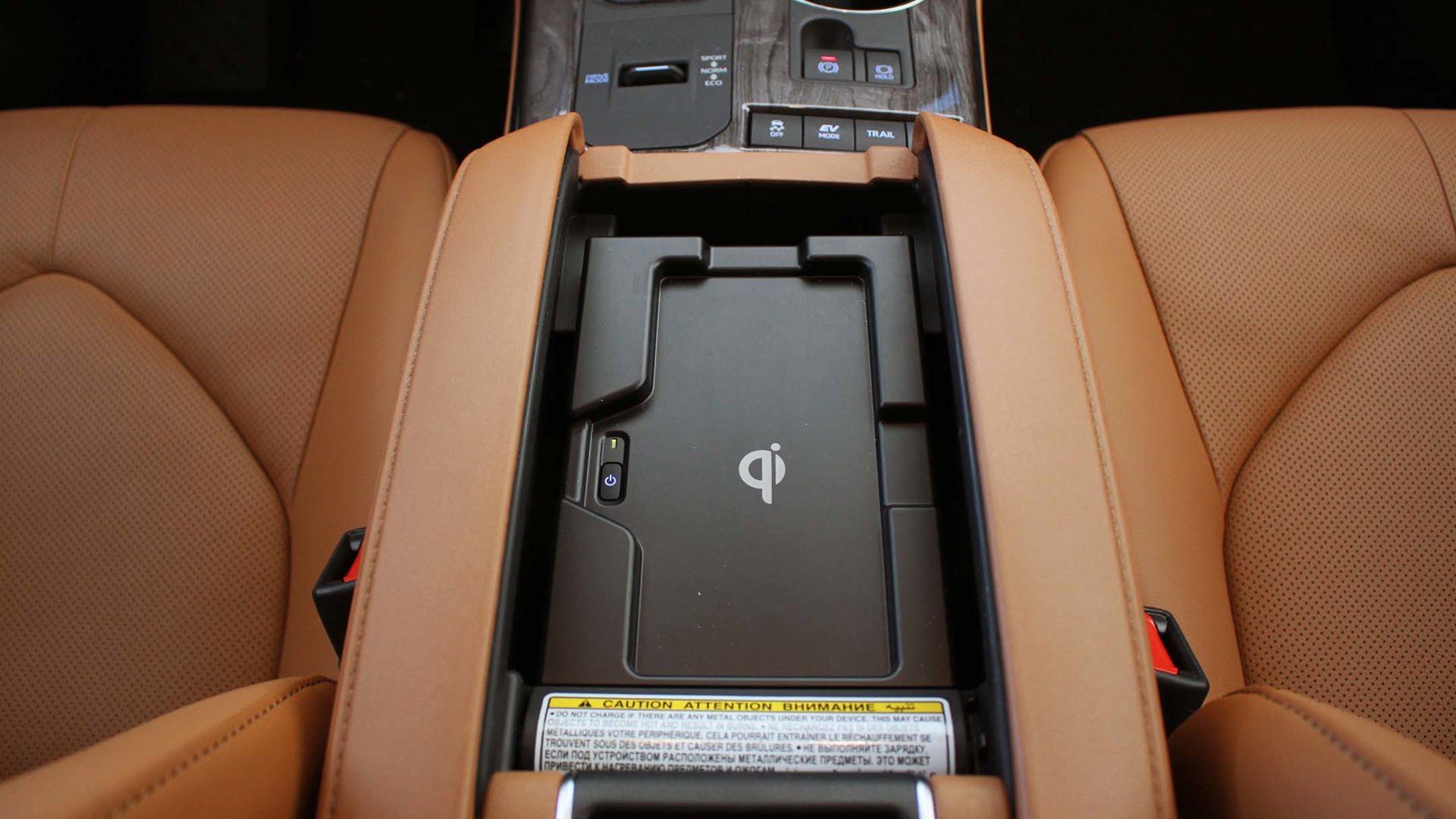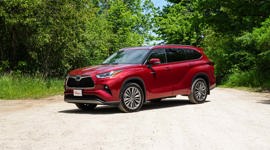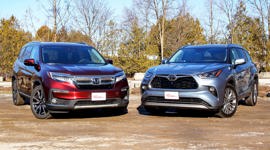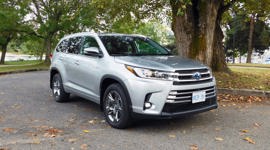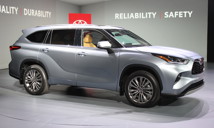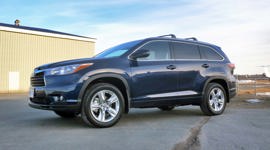 AutoTrader SCORE
AutoTrader SCORE
-
STYLING6/10
-
Safety8/10
-
PRACTICALITY7/10
-
USER-FRIENDLINESS7/10
-
FEATURES8/10
-
POWER8/10
-
COMFORT7/10
-
DRIVING FEEL8/10
-
FUEL ECONOMY10/10
-
VALUE6/10
The three-row crossover segment has seen a significant shakeup with new entrants that have seen critical success: The Kia Telluride, Hyundai Palisade, and Subaru Ascent have all impressed experts with their packaging, pricing, and quality. And now it’s Toyota’s turn to address the judges. The Japanese automaker has always delivered one of the most popular vehicles in the segment, and the Toyota Highlander is not one to let its top spot go so easily.
The 2020 Toyota Highlander boasts an updated architecture, a gorgeous new cabin, and an advanced hybrid powertrain that should let it stand out against its upstart competitors. So how does it fare?
Styling: 6.5/10
Although Toyota has been making significant strides in terms of exterior design, it’s clear that the automaker played it safe with the redesign of the 2020 Highlander. It’s a bit longer and wider, and you’ll see some slick body lines along the side profile; but the front end design isn’t too far from what is on the road today. In fact, the grille design and size brings to mind some other vehicles in its class, like the Subaru Ascent. Anonymity isn’t a desirable trait – the Highlander is taking a risk by playing it safe with its exterior design.
The interior is the highlight, style-wise. Toyota has gone to great lengths to ensure that the cabin of the Highlander is both practical and attractive. The two highest trim level models are full of amenities, but the mix of materials in addition to the build quality is what makes the Highlander stand out. There is limited use of hard plastics in these models, and the selection of hues for the upholstery is a welcome addition for the mainstream brand.
Safety: 8.5/10
The Highlander hasn’t been rated by the Insurance Institute for Highway Safety (IIHS), but we’d wager that it’d fare pretty well in the institute’s tests – even the lighting test that has tripped up others, thanks to the standard LED headlights and taillights. The TNGA platform that underpins the Highlander is used in a wide selection of Toyota products, and they’ve all fared well safety-wise.
Equipment-wise, the Highlander puts safety features at the forefront, to give drivers their best chance at avoiding accidents. Toyota Safety Sense 2.0 is standard, meaning features like a pre-collision system with pedestrian and cyclist detection, radar cruise control, lane-departure assistance, blind spot information, rear cross-traffic alert, and automatic high beams are standard. Toyota also offers a fancy rear-mirror camera display, for a better view even when passengers or cargo obscure the rear window. The rear-view camera also has a washer to ensure it doesn’t get mucked up in rainy or snowy weather. There’s available parking assistance, including a bird’s-eye view of the vehicle, that helps make manoeuvring the three-row SUV in tight corners much easier.
Features: 8/10
In addition to all the safety and assistance systems, the Highlander offers a pretty extensive list of convenience and luxury features. Some are just for the driver or passenger, like the available head-up display or wireless phone charger, while other features can be enjoyed by everyone, like the huge panoramic sunroof. There are available vented seats up front and plenty of features that are designed for the tough winters that most Canadians face. These include a windshield wiper de-icer, heated mirrors, heated steering wheel, and an available three-zone climate control system. No one yet has caught up to Kia/Hyundai in terms of offering cooled seats for the second row; but the Highlander does offer heated seats in the first and second rows – depending on the trim level, the second row can be a bench or a set of captain’s chairs, which offer the feature.
Most buyers should be happy with the tech features of the Highlander. It comes standard with Android Auto and Apple CarPlay, and offers a 12.3-inch touchscreen and an 11-speaker, 1200-watt JBL sound system. Toyota’s Connected Services is a subscription service that works with an app to provide additional safety and convenience features like remote start and vehicle lock and unlock, in addition to an app-based servicing reminder.
User Friendliness: 7/10
One of the best parts of the Highlander is how easy it is to get in and go. The infotainment system is still a bit clunky and slow, but the Android Auto and Apple CarPlay support help mitigate that. There are also plenty of USB ports for device charging. Visibility is very good, especially forwards thanks to some clever re-designing of the side-view mirrors, providing drivers with a better sense of the dimensions and proportions of the car. While Toyota increased the sliding range for the second-row seats, to ease access to the third row, they don’t have power-folding seats for either the second or third row – and folding the second row completely flat is a two-handed affair. Also, unlike some vehicles like the Ascent and Palisade, the Highlander doesn’t have any grab handles to help passengers in the third row manoeuvre within the cabin. At least the trunk can be opened hands-free, with a kicking motion by the liftgate.
Practicality: 7/10
Those missteps in terms of user-friendliness may seem like nit-picks, but three-row vehicles should be designed to help families on the go, with the effortless ability to convert from family-hauler to grocery-getter, and everything in between. The Highlander has plenty of space to make this a reality, with 456 L of cargo capacity behind the third row. The third row can fold with a 60/40 split, providing 1,150 L of space, while folding the second row brings the total to 2,076 L. However, this is significantly less than the space available in the Subaru Ascent, Kia Telluride, and Hyundai Palisade. One positive for the Highlander is that choosing the hybrid power plant doesn’t impact the cargo room in any way, as the batteries are placed beneath the second row.
While the cargo room is a bit limited compared to the competition, the Highlander has a fantastic amount of in-cabin space. There are storage cubbies and shelves everywhere, and even smart pass-throughs for cables.
Comfort: 7.5/10
The Highlander feels a bit more spacious than the last-generation model, and even the second-row seats are usable and comfy. That huge panoramic sunroof helps the cabin feel huge, allowing for lots of natural light. Add that to the available three-zone climate control, and the Highlander provides a high-quality first impression. The upholstery, materials, and touchpoints all feel high-end, and long trips in the cabin should be a breeze. On the road, the car doesn’t feel stiff or bouncy and has a very controlled body roll.
Power: 8/10
The Highlander is unique in this segment, offering buyers a choice of two engines. Base models feature a 3.5-litre V6 engine making 295 horsepower and 263 lb-ft of torque. It’s paired to an eight-speed automatic. The most affordable L trim model comes with front-wheel drive, while every other model is equipped with all-wheel drive. The motor comes with automatic stop-start technology and is rated at 10.3 L/100 km in combined driving situations for both front- or all-wheel-drive models, thanks to a driveline disconnect feature.
The all-wheel-drive models come with two different arrangements for how they distribute torque to various wheels when needed. Higher trim levels – Platinum and Limited – feature a torque-vectoring system that not only splits the power 50/50 to the front and rear axles, but can also send 100 percent of the available power to the rear-left or -right wheels when needed; other trims leave the split at 50/50 to the left and right rear wheels. This should help with traction in different road conditions, and there are a few drive modes to help provide extra confidence.
Buyers can also opt for the hybrid powertrain in every model except the base L: a 2.5-litre inline-four-cylinder engine that’s augmented with a pair of electric motors. Total output is rated at 243 horsepower, and there is a negligible difference in acceleration between the two. The engine operated with an eCVT, and is extremely fuel-efficient. Toyota rates it at 6.7 L/100 km, but our experience with the vehicle saw figures much lower than that.
One major difference between the hybrid and conventional drivetrains is the towing capacity. Hybrids are only rated to tow 3,500 lb, while gas models are tough enough to tow 5,000 lb. However, if towing isn’t a concern, we’d recommend the Hybrid model – if you’re considering a Highlander over its competitors, the hybrid system is the key standout feature.
Driving Feel: 8/10
The motors are smooth and acceleration doesn’t lag behind any of the Highlander’s rivals. The hybrid and its CVT can sound a bit overworked and buzzy when it’s time to make a pass, but that’s the only downside to the powertrain.
The 2020 Highlander is the latest vehicle to sport the TNGA architecture, which is already in use in the RAV4, Corolla, Camry, CH-R, and Prius. That architecture has helped turn the personality of the entire Toyota lineup from boring to bright, and even the Highlander is pleasantly responsive. The suspension is wonderfully composed, and the chassis is well sorted. Piloting the big three-row vehicle is very natural.
Fuel Economy: 10/10
With the 3.5-litre V6 engine, the Toyota Highlander is rated at 11.9 / 8.3 / 10.3 L/100 km city / highway / combined for the front-wheel-drive model; all-wheel-drive models are rated at 11.7 / 8.6 / 10.3 L/100 km city / highway / combined.
Toyota says that the hybrid models come in at 6.7 L/100 km combined, with a total driving range of 967 kilometres on a single tank of gas. Without a doubt, the Highlander Hybrid is the model to get between the two, and when looking at the range of vehicles in this class, the Hybrid stands out for its extremely strong efficiency.
Value: 6.5/10
The base Toyota Highlander L is the only trim level with front-wheel drive, starting at $39,990. The LE gets AWD and starts at $43,490; the XLE starts at $45,990. Limited models feature a $51,690 asking price, while the range-topping Platinum trim comes in at $53,990.
The Hybrid models all come with all-wheel-drive, starting at $45,490 for the LE model, $47,990 for the XLE, $53,690 for the Limited, and $55,990 for the Platinum.
While features like a head-up display, wireless charging, standard safety equipment, and cold-weather conveniences help make the Highlander cabin a comfortable place to be, it still lacks some of its competitors’ killer features. It’s also missing a few amenities, such as power-adjustable rear seats, or seat ventilation for second-row passengers.
The Toyota Highlander is more expensive than many of its competitors, but it’s not clear whether that will have an impact on buyers. The Highlander has always been one of the most popular choices in the segment, with buyers prizing the brands’ legendary reliability over a long list of features.
The Verdict
The Highlander has been thoroughly updated with tons of features, a gorgeous new cabin, tons of technology, and an advanced, efficient hybrid system. It’s a bit expensive, but buyers are paying for the expected reliability that only Toyota can offer, in addition to the confidence found only in one of the most successful automakers in the world. While it’s hard to beat the stunning package offered by the Kia Telluride and Hyundai Palisade, the Highlander offers a hybrid for efficiency-seekers that can’t be matched, pairing it to a high-quality vehicle that shouldn’t be overlooked.
| Engine Displacement | 2.5L |
|---|---|
| Engine Cylinders | I4 |
| Peak Horsepower | 243 hp combined |
| Peak Torque | n/a |
| Fuel Economy | 6.7 L/100 cmb |
| Cargo Space | 456 / 1,150 / 2,076 L behind 3rd/2nd/1st row |
| Model Tested | 2020 Toyota Highlander Hybrid XLE |
| Base Price | $45,990 |
| A/C Tax | $100 |
| Destination Fee | n/a |
| Price as Tested | n/a |
|
Optional Equipment
n/a
|
|
